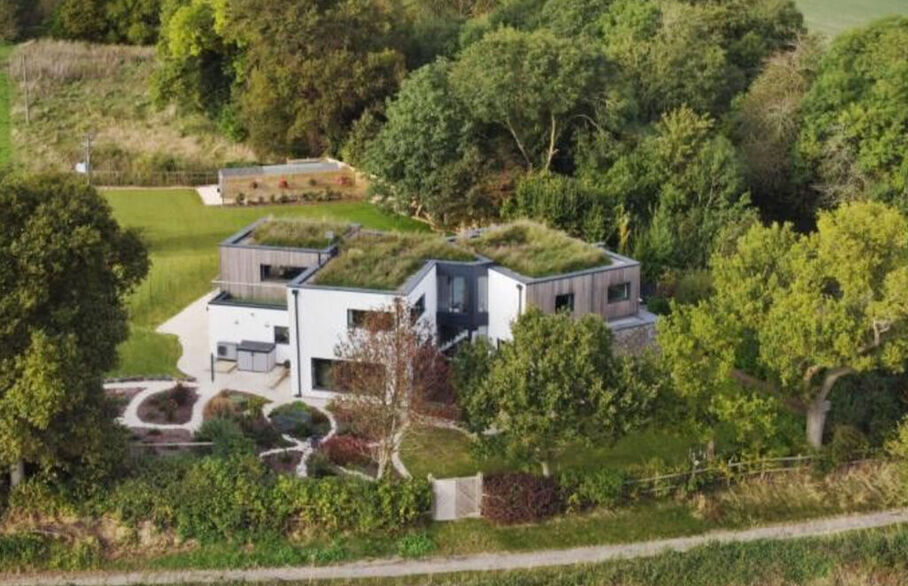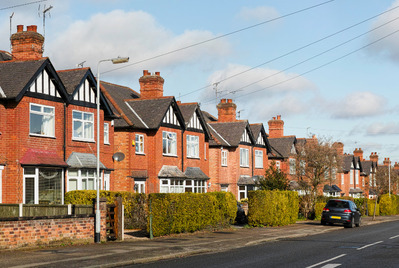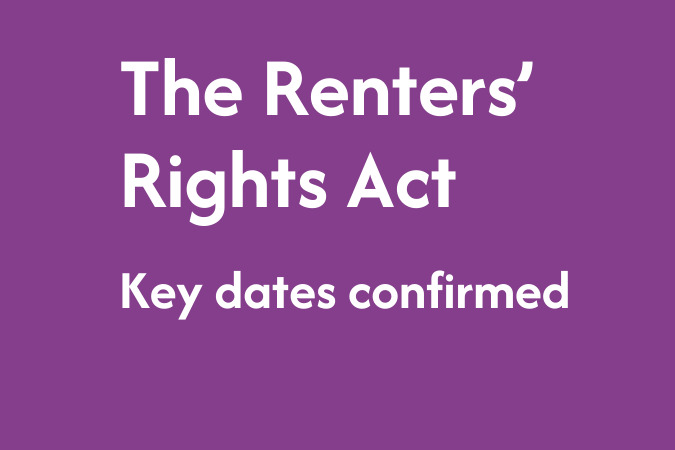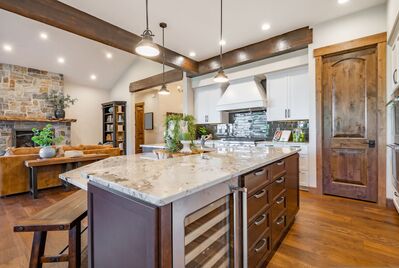Eco homes – what are they and are they for you?

Eco homes – what you need to know
Would you like to make a difference to the planet and climate by changing the way you live?
You may think you live an eco-friendly existence, but would you go the next step and live in an eco home?
What is an eco home?
Eco homes can encompass different terms including ‘renewable’, ‘sustainable’, ‘energy efficient’, ‘low carbon’ or ‘zero emission’.
An eco home can refer to how the house was constructed and its low emissions or that the building uses minimal energy to run when it is lived in. It can also refer to sustainable materials being used in its construction or a low impact on the surrounding environment.
What should an eco home include?
An eco home should include some or all of the following:
- High insulation levels
- High airtightness levels
- Natural materials used in the building process which may include timber frames, wool insulation, straw bale walls and organic paints
- Double or triple glazed windows
- Orientated and located to make the maximum use of daylight and solar gain
- Glazing maximised on the south side of the property for heat and light and minimised on the north facing side to reduce heat loss
- Heating and/or hot water from a renewable source such as heat pumps, biomass or solar panels
- A healthy indoor environment which may include a mechanical ventilation with heat recovery (MVHR) system in a highly airtight home
- An electricity supply from a ‘green’ energy supplier
- Renewable energy systems such as ground and air source heat pump, solar PV or solar thermal
- Natural materials used throughout with an avoidance of plastic materials
- Rainwater harvesting and greywater collection
- Roof overhangs or air conditioning to manage overheating
An eco home can be specified as such if it comprises of any of the elements above suitable for the site, the type of property and the inhabitants.
Energy efficiency
A key consideration should be how much energy is consumed. This includes heating, lighting and water consumption. Where possible LED lighting or motion sensor lighting should be used for example. Energy prices are steadily increasing and with the demand and costs for energy set to increase, the benefits of a home with energy efficient renewable systems benefits both the planet and the purse-strings.
Good insulation is key
The insulation and airtightness of the property are the main factors that will help to reduce the amount of energy required to heat the home. Care in the construction process should consider the insulation depths, window sizes and orientations to make the most of solar gain. It is important that the insulation is as consistent as possible throughout the whole of the property.
Using sustainable materials for construction
A carbon neutral home is one that offsets the carbon produced during the building of the home as well as the footprint of heating and powering the home. The most efficient way to do this is to use building materials which have a low carbon footprint and to use renewable heating systems that don’t rely on fossil fuels.
The carbon dioxide produced in the manufacture and transportation of building materials can affect the ‘green’ rating of the property. For example, concrete emits high amounts of carbon dioxide during production. Alternatives such as timbercrete, limecrete and hempcrete are less energy intensive alternatives.
Sustainably sourced materials such as Forestry Stewardship Council (FSC) Timber, recycled timber products or natural materials such as sheep’s wool, straw bale, lime or cellulose insulation are suitable sustainable building materials. They also benefit from being free of harmful chemicals and possible environmental pollutants for a healthier living environment.
Sustainable building materials are often more durable and require less maintenance over time, saving time, energy, money and environmental impact on costly repairs.
Recycling materials within the home
Wherever possible, using recycled materials both in the construction of the home and within fixtures, fittings and furniture in the home can all help to reduce the impact on the environment.
Protecting and enhancing the environment
Improve the surrounding biodiversity of the property by planting a wildflower meadow or ‘green’ roof.
What should I look for when considering an eco home?
An energy performance certificate rates a property’s energy efficiency and is required before a property can be put on the market for sale. Properties are rated from A to G. Classification A - is ‘very energy efficient’ to G - ‘not energy efficient’. It considers the heating and lighting costs of a property and makes suggestions for how a property’s energy efficiency can be improved, for example by improving insulation, airtightness and reducing draughts, adding low energy lighting and double glazing. Eco homes should be classed as most energy efficient with an A or B rating.
Why purchase an eco home?
A well-constructed eco home not only provides an improved symbiotic and healthy living environment, but also offers long term potential cost savings due to lower running costs and energy efficiency. By installing renewable energies, eco homes help to reduce the impact on the environment to climate change and global warming.
Home buyers are increasingly seeing the benefits of eco home living due to the lower running costs and future proofing how you live. A great investment for the future for you, your families and the planet.
Eco home for sale
Interested in an eco home? We're delighted to be offering this stunning property.
Ways you can help to reduce the carbon footprint of your home.
- When looking to replace appliances for the home, look for those with the most efficient energy ratings. Your old appliances can also be recycled.
- Turn your electrics and lights off fully when you’re not using them.
- Monitor your energy usage using a smart meter. Using a meter doesn’t directly cut down your energy consumption but it can help you to understand which appliances use the most energy. Some energy suppliers will provide them free of charge when you take out a contract with them.
- Install a smart thermostat. Helping you to conserve the energy you use in your home by allowing you to programme when you use energy to heat your home.
- Use LED lighting options or energy saving options wherever possible.
- When using washing appliances in your home you may be able to select the ‘eco’ function or wash at a lower temperature. Washing when you have full loads of clothes or dishes is the most energy efficient option.
- Compost your kitchen green waste to limit the anaerobic decomposition and methane emissions that occur in landfills and the carbon footprint of transportation to the landfill site.
For more information and advice on how to make your home energy efficient, reduce your carbon emissions and lower your energy bills visit the Energy Saving Trust.
Need help or advice?
If you're looking for help or advice to buy, sell or rent your home then contact your local branch who will be happy to help.






